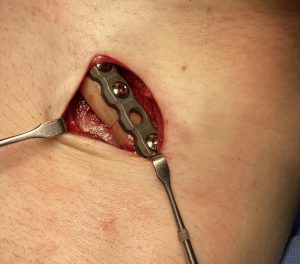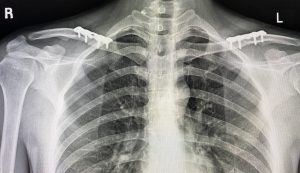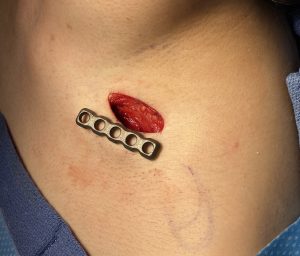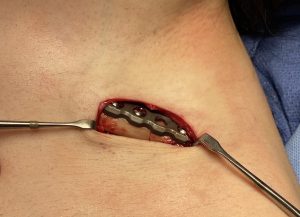In clavicle reduction osteotomies for reductive shoulder reshaping surgery, the key technical step in the procedure is holding the bone in place once it is put back together. This bone fixation is done by titanium plates and screws of which there is a wide variety of types and manufacturers. All of these plate and screw clavicle systems are made for repairing traumatic fractures of the collarbone since elective osteotomies for changing the length of the clavicle has not existed until recently.
But since clavicle fractures are typically more unstable bone segments than a clean osteotomy line due to fragmentation and non-linear patterns, the use of trauma plates for clavicle osteotomies should work just as well if not better. But what exact plate lengths and screw widths to use for clavicle osteotomies is not an exact science and no formal guidelines exist for their use. To date I have been cautious and used a double plating technique with a longer plate placed in the superior bone surface and a smaller plate on the anterior bone surface, both using bicortical 2.7mm screw diameters.


Dr. Barry Eppley
Indianapolis, Indiana




